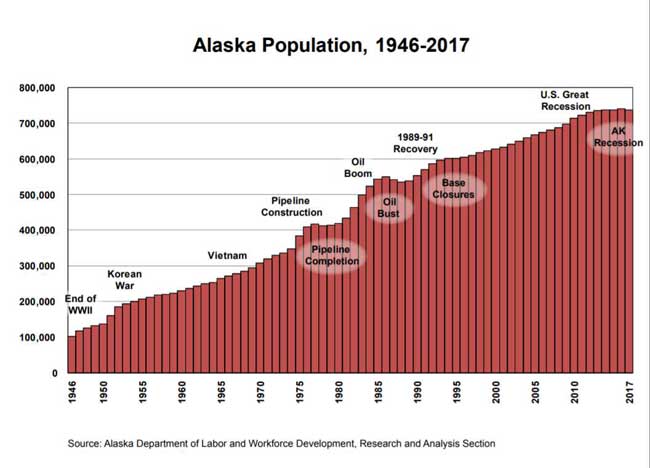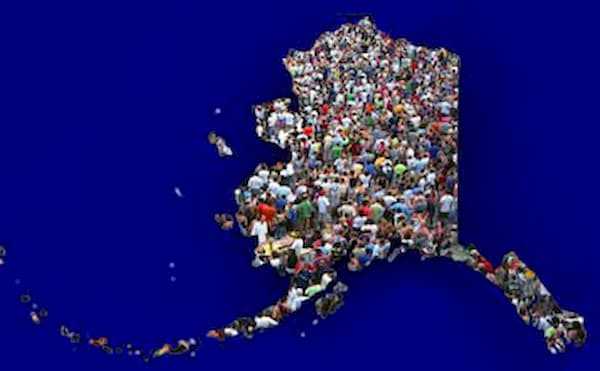 JUNEAU, Alaska — Alaska’s population decreased by 3,048 people — 0.4 percent — from July 2018 to July 2019, based on estimates released Wednesday by the Alaska Department of Labor and Workforce Development. This was the third straight year of decline for the state’s total population, which peaked at 739,649 in July 2016 and stands at 731,007 as of July 2019.
JUNEAU, Alaska — Alaska’s population decreased by 3,048 people — 0.4 percent — from July 2018 to July 2019, based on estimates released Wednesday by the Alaska Department of Labor and Workforce Development. This was the third straight year of decline for the state’s total population, which peaked at 739,649 in July 2016 and stands at 731,007 as of July 2019.
Net migration — in-migrants minus out-migrants — accounted for a loss of 8,308 people. The migration-related losses were driven more by a decline in the number of people moving to Alaska than to an increase in the number leaving the state.
Another contributor to the state’s population loss was a decline in births and, to a lesser degree, an increase in deaths.
Of Alaska’s 29 boroughs and census areas, 19 lost population between 2018 and 2019. The biggest loss was in the Municipality of Anchorage (-2,643), followed by Fairbanks North Star Borough (-954). The Matanuska-Susitna Borough grew the most (+1,024).
Among the state’s six economic regions, Anchorage/Mat-Su lost the most over the period (-1,619), and only Gulf Coast (60) and Southwest (47) grew overall. All six regions showed net migration losses.
Alaska’s under-18 and 18-to-64-year-old populations each declined by more than 1 percent while the 65-and-older group grew by just under 5 percent. Haines Borough’s median age was the state’s highest at 48.6 while Kusilvak Census Area was lowest at 24.3.
Complete estimates for the state, boroughs/census areas, cities and census designated places are available on the department’s Research and Analysis Section website at live.laborstats.alaska.gov/pop. Also available are estimates for other areas — census tracts, school districts and Alaska Native Regional Corporations — and estimates by age and sex for each borough and census area and for places with populations of 1,000 or more. New estimates by race and ethnicity will be released in August 2020.
View data table (PDF)
###





